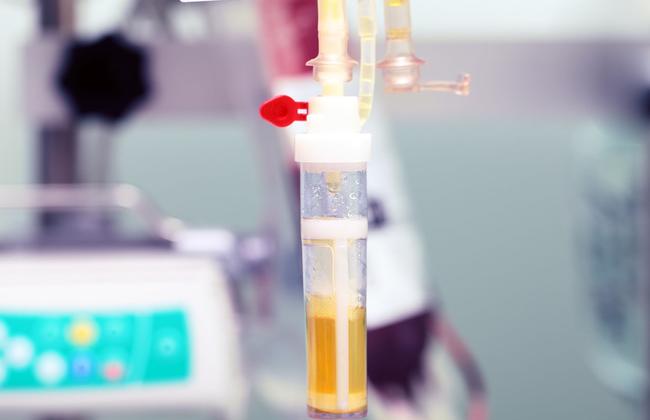COVID-19 Therapy with Convalescent Plasma – Tests for the Identification of Suitable Donor Plasma
Administration of convalescent plasma is a treatment option for patients suffering from COVID-19, which has been tested world-wide. Since the levels of virus neutralising antibodies differ significantly in persons who have recovered from the disease, reliable and simple tests are required, which determine whether the plasma contains sufficient SARS-CoV-2 neutralising antibodies. Researchers of the Paul-Ehrlich-Institut have compared different test systems also in view of everyday clinical usability and have found a simple and rapid procedure for identifying plasma with high antibody titres (J Virol Methods, online edition of 1 December 2020).

The Paul-Ehrlich-Institut has authorised several clinical trials for convalescent plasma to be used in COVID-19 therapies in Germany. A major challenge in COVID-19 therapies with convalescent plasma is the identification of plasma samples which have therapeutical potential and display a high level of SARS-CoV-2 neutralising antibodies. However, the amount of antibodies and the virus-neutralising activity in sera of convalescent COVID-19 patients who recovered from the disease varies greatly. It is thus important to establish reliable, rapid, and simple tests that are able to determine the in vitro neutralising activity against SARS-CoV-2 in convalescent plasma.
Researchers in the team of Professor Barbara Schnierle, head of Section "AIDS, Emerging Pathogens" at the Paul-Ehrlich-Institut, have compared three different test systems in a cooperation with colleagues from the Charité – University Medicine in Berlin and the blood donation center and the university hospital in Dresden. Criteria such as the required safety standards (biosafety level) were also considered in the evaluation. The researchers compared the corona live virus neutralisation by means of a plaque reduction assay, a pseudo-type neutralisation test based on a lentiviral vectors, and a surrogate virus neutralisation test (sVNT) based on a competitive ELISA.
Virus neutralisation tests must be performed under biosafety level 3; so-called pseudotype neutralisation tests require biosafety level 2. Most hospitals, however, cannot provide these high biosafety standards. The sVNT test, as simple ELISA, can be performed in any laboratory without particular biosafety requirements.
Another disadvantage of pseudo-type neutralisation and virus neutralisation tests is that they are very time-consuming. Results are available only after two to three days. The sVNT test, however, can be performed within up to three hours. On the other hand, the disadvantage of the sVNT is that low neutralising sample are overrated by the sVNT.
The result obtained by the researchers is that the sVNT test is suitable for everyday practice and superior to other test methods in a clinical environment. In laboratories with a low biosafety level, it allows the rapid identification of convalescent plasma with a high neutralising activity, and thus a fast identification of suitable donors.
Background – Convalescent Plasma for the Treatment of Infectious Diseases
The use of convalescent plasma is a therapy option known for a long time for serious courses of infectious diseases including the measles, the mumps, or even infections with SARS (severe acute respiratory syndrome) coronaviruses and MERS (Middle East respiratory coronavirus) coronavirus. This method involves blood plasma from persons who recovered from an infectious disease and have developed immunity against the pathogen in question. Their blood plasma contains antibodies which can combat the pathogen in a targeted manner. This is called passive immunisation. The use of convalescent plasma is also being tested for the treatment of COVID-19 patients in clinical trials world-wide. First successful treatments of COVID-19 patients using antibodies have already been reported.
Original Publication
von Rhein C, Scholz T, Henss L, Kronstein-Wiedemann R, Schwarz T, Rodionov RN, Corman VM, Tonn T, Schnierle BS (2021): Comparison of potency assays to assess SARS-CoV-2 neutralizing antibody capacity in COVID-19 convalescent plasma.
J Virol Methods 288: 114031.
Text
top



